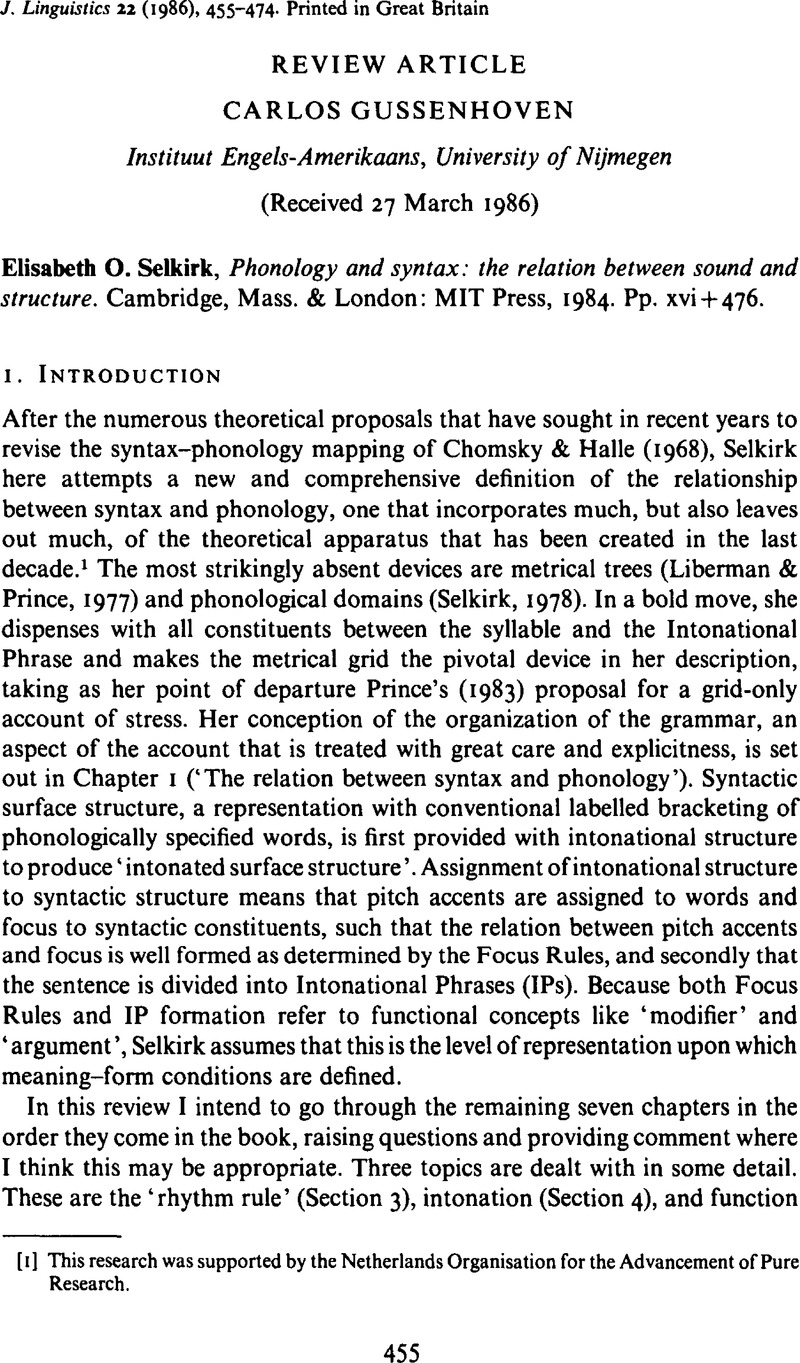Crossref Citations
This article has been cited by the following publications. This list is generated based on data provided by Crossref.
Kager, René
and
Visch, Ellis
1988.
Metrical constituency and rhythmic adjustment.
Phonology,
Vol. 5,
Issue. 1,
p.
21.
Gussenhoven, Carlos
1991.
The English Rhythm Rule as an accent deletion rule.
Phonology,
Vol. 8,
Issue. 1,
p.
1.
Shattuck-Hufnagel, S.
Ostendorf, M.
and
Ross, K.
1994.
Stress shift and early pitch accent placement in lexical items in American English.
Journal of Phonetics,
Vol. 22,
Issue. 4,
p.
357.
1997.
Focus and Secondary Predication.
Gussenhoven, Carlos
2005.
Procliticized Phonological Phrases in English: Evidence from Rhythm*.
Studia Linguistica,
Vol. 59,
Issue. 2-3,
p.
174.





